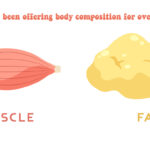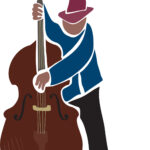Do you feel like you spend your life cleaning up after others? “The health of Mainers” ~ with Dr. Lou
The health of Mainers is in the balance while cleaning homes and businesses. In our office we see a lot of Mainers in professional housekeeping careers, as well as homemakers who work their butts off cleaning maine homes, businesses and their own spaces too. Injuries in housekeeping know no gender. They strike everyone equally. The most common housekeeping injuries appear to be musculoskeletal injuries, particularly those caused by slips, trips, and falls. What are the most common examples of injuries in the housekeeping workforce? 1. Musculoskeletal injuries are consistently mentioned as a major concern in the housekeeping industry. According to one source, hotel housekeepers have the highest rate of musculoskeletal injuries among service sector employees[7]. Most housekeepers aren’t salaried. If they don’t go to work, they don’t get paid. Addressing injuries quickly is the best way to get back to work quickly. 2. Slips, trips, and falls are frequently cited as a leading cause of injuries: – One source states that “falls, slips, and trips” contribute to 20.5% of injuries for hotel housekeepers, making it the main preventable cause of injury[13]. If you don’t feel like your legs are connected to your brain, a chiropractor can help with this....
read moreRapid Release Therapy Heals You Faster And More Comfortably – Ask Dr. Lou!
Why Is Rapid Release Therapy So Great? At Jacobs Chiropractic Acupuncture, we have chosen to use Rapid Release Therapy for our patients muscular injuries. Rapid Release Therapy (RRT), as you will learn below is highly effective for treating nerve, muscle and connective tissue injuries in everyone, not just athletes and musicians. As of the writing of this blog post, there are only three offices in Maine listed on the RRT website with this device, one of which is ours in Portland. The Rapid Release Technique is considered highly effective for several reasons: 1. Targeted high-speed vibration: RRT uses high-frequency vibrations (around 160-170 Hz) that are specifically designed to target and break down scar tissue, adhesions, and muscle tension [1][2][4]. Whether you have a frozen shoulder, surgical scar tissue, TMJ pain, tension headaches, trigger finger or tennis elbow, RRT should be able to help. 2. Quick and effective: Our treatments typically take only 2-5 minutes per area, providing rapid relief [1][4]. Efficiency is the name of the game. The less time you spend receiving treatment, the more time you spend enjoying your life with friends, family, the beach, your dog, or on vacation. 3. Non-invasive and painless: Unlike...
read moreWhat is “Phase Angle” and how is it a critical indicator regarding your health? Portland, Maine
The Ignored Health Indicator: Why Phase Angle Matters When it comes to assessing our health and wellbeing, we often focus on obvious metrics like weight, blood pressure, or cholesterol levels. However, there’s a lesser-used measurement that’s long overdue in gaining attention within the medical and fitness communities, for its ability to provide unique insights into our overall health: phase angle. Now you should know that this phase angle thing has been around for decades, and we’ve been using it at our office to predict peoples health and well being. Over time this measurement is valuable for understanding cellular and whole body health as well as one’s vulnerability to disease on a cellular level (think cancer, kidney disease, liver disease, etc). What is Phase Angle? Phase angle is a measurement obtained through bioelectrical impedance analysis (BIA), a non-invasive method of assessing body composition. It’s calculated based on how electrical currents flow through our body tissues and provides information about cellular health and integrity. Why Phase Angle Matters for Health 1. Cellular Health Indicator: A higher phase angle generally indicates healthier, more intact cell membranes and better cellular function. This translates to improved overall health at the most fundamental level –...
read moreMy Doctor Thinks I’m Fat. Prove Them Wrong. Body Composition Testing in Portland, Maine.
Why Body Composition Testing With Dr. Lou Beats BMI for Assessing Health For decades, Body Mass Index (BMI) has been the flawed go-to metric for assessing whether someone is at a healthy weight. However, BMI has significant limitations, and body composition testing offers a much more accurate and insightful way to evaluate overall health and fitness. A recent piece produced by NPR brought eyes toward testing that is far more accurate than the generic BMI calculation and as you’ll see in the video below, Dr.Lou was way ahead of the times. Here’s why body composition analysis is superior to BMI: 1. BMI doesn’t distinguish between fat and muscle The fundamental flaw with BMI is that it only considers height and weight, without differentiating between fat mass and lean mass. This means a muscular athlete could have the same BMI as someone who is overweight, despite having very different body compositions and health profiles. Body composition testing, on the other hand, directly measures fat mass, muscle mass, and other components to give a true picture of your body makeup. Dr. Lou’s “RJL SYSTEMS” lab grade body composition test can help you with baseline readings and subsequent readings to determine whether...
read moreDouble Bass Posture & Prevention – Dr. Lou – Maine’s “Rock Doc” lays it down.
Double Bass Players – Be Aware. As a chiropractor, posture, biomechanics, and structural integrity of the human frame and how they interact with the nervous system is my primary focus with musicians and common folk alike. The musicians that I have worked with over the past 22+ years need their bodies and brains to work together for speed, accuracy, consistency, and a perfection that can only come with years of training. Years of training translates to years of wear and tear, which can lead to pretty awful situations at times. Double bass players have a handful of risk factors that other musicians don’t. Their instruments put interesting demands on their bodies, which can lead to not so “interesting” injuries. Below you will find things to be aware of if you are an double bass player. Standing Posture 1. Balanced Stance: Maintain a balanced stance with feet shoulder-width apart and weight evenly distributed on both feet. Avoid leaning excessively to one side or putting all your weight on one leg[1][5]. Wear supportive shoes with inserts to create a foundation that properly supports and align the joints of your body. 2. Bass Angle: Position the bass at an angle, not completely...
read more




